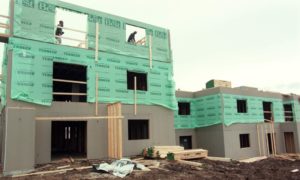Two news items caught my eye last week — one a human interest piece, the other a business announcement. Yet at their heart, they pointed to the same need.
Gazette business reporter George C. Ford detailed plans by an Alliant Energy subsidiary to launch a 1,300-acre mega commercial and industrial park near The Eastern Iowa Airport.
The development, made possible by an agreement to sell family farm lands, would benefit from the state’s first certified super park development, also nearby and being developed by the airport, and a first-of-its-kind freight and logistics hub planned by the Iowa Department of Transportation.
 The mega park known as Big Cedar, the transportation hub and complementary super park received praise from state officials, who dubbed the projects as critical economic drivers for the region and state.
The mega park known as Big Cedar, the transportation hub and complementary super park received praise from state officials, who dubbed the projects as critical economic drivers for the region and state.
Elsewhere in the city — more accurately throughout the city — those who care for people experiencing homelessness celebrated a different victory. This winter, emergency overflow shelters will activate when temperatures drop to 32 degrees instead of last winter’s much more frigid threshold of 15.
Reporter B.A. Morelli notes the system was put to use on Nov. 11, when 16 people slept in overflow beds, and that organizers expect an increase in the number of people accessing such services this winter.
News of potential new businesses was met with excitement. Ford’s story on Big Cedar was one of this newspaper’s most viewed and shared items online. Interest in the work to circumvent wholly preventable weather-related illness and fatalities was notably more subdued.
But at their core, these news items share a theme: economic sustainability. They simply use different entry points.
Developers like cleared land that can be easily connected to roadways and utilities. For obvious reasons, a hub connecting freight to multiple transportation choices is another bonus.
Sustainable businesses must also have access to a workforce, and it’s more difficult to persuade people to move to or remain in an area where cost of living outpaces earnings.
Households earning this area’s median income or less are burdened by existing housing stock. Those earning 60 percent or less of the median — about $35,000 a year (or roughly $17 per hour full time) for a single person, or $50,000 for a family of four — are especially hard hit by the area’s housing costs.
The city of Cedar Rapids’ latest housing survey update analyzed demand for Low Income Housing Tax Credit rental housing. Research indicated the market area — Cedar Rapids, Marion, Hiawatha and nearby portions of Linn County — needs to create between 181 and 245 affordable housing units each year through 2020 to meet demand.
Nineteen publicly accessible properties were developed in the market area as shallow- or deep-subsidized affordable housing. The area’s newest affordable housing properties are located in Marion and will add 127 housing units, which are all age-restricted.
According to city research, “all of the properties that provide supportive living services and properties that target households with very low incomes are essentially fully-occupied and several have extensive waiting lists.”
Adding a major manufacturer or other large business could be good for Cedar Rapids. But without community commitment to affordable housing, no such addition will be sustainable.
Let’s welcome new employers, large and small, to our area.
But let’s also make sure their workers have affordable, safe places to call home.
This column by Lynda Waddington originally appeared in The Gazette on December 4, 2016.
